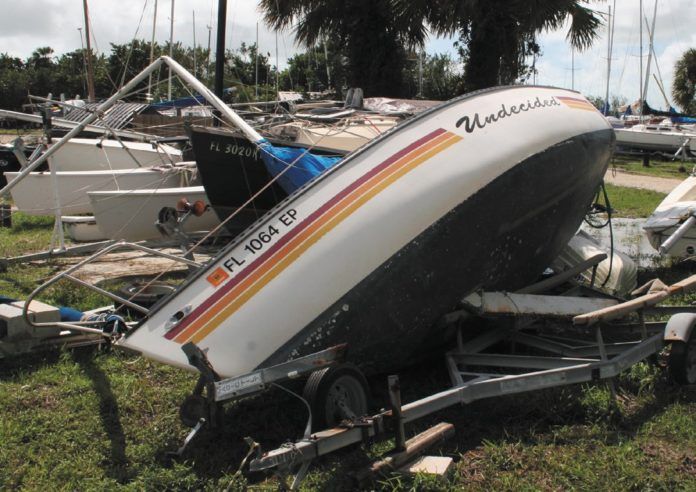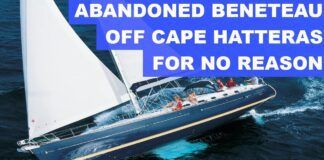Every storm is a learning experience, but sometimes it takes time to deconstruct the events and recognize what worked and what didnt-and what can be done to prepare for the next storm. Two lessons, in particular, stand out from this years hurricane season.
One detail that was apparently lost on a large number of boaters this year was the need to remove sails before a hurricane. The risk of a sail unfurling in a tropical storm may seem self-evident, but there are still boaters who think that lashing down the mainsail to the boom or wrapping extra lines around the roller furling sail is sufficient.
Irma proved this wrong. By the time the storm moved north, boatyards and marinas on both coasts were strewn with broken masts of boats whose owners failed to remove their furling jibs.
The other lesson has to do with mooring pendants. In a convenient twist, the quest for a more eco-friendly mooring system in Florida has led to a design that not only has very little impact on the sea bottom, but is also nearly storm-proof. The mooring anchors are helical screws driven deep into the bottom (sand over limestone). The downlines are elastic Stormsoft lines with 18,000 pound breaking strength. All but one of the 226 such moorings in Boot Key Harbor held through the storm.
Although the moorings held, about of the boats were lost. Chafe on the mooring lines and extreme loads caused by boat-to-boat collisions were clearly contributing factors. However, based on what weve learned about anchor snubbers in recent years, another factor might be at work.
Practical Sailor has done extensive testing on anchor snubbers, which serve the same function as mooring pendants. Both are a shock-absorbing connection between the less yielding mooring system and the boat. As weve found in our snubber testing, a longer line, which takes full advantage of the inherent elasticity in rope, can better reduce dynamic loads on the anchor and the boat. In Boot Key, most of the boats used 10-foot-long mooring pendants, as specified by the management.
Based on our testing, this isn’t enough. At least two or more 30-foot lengths of 11 millimeter climbing rope (or 1/2-inch three-strand or octo-plait nylon) would be a better shock absorber for the average 37-foot cruiser.
Many mooring fields, like Boot Key, are too tightly packed to allow for longer mooring pendants. Going forward, however, waterfront planners should carefully consider how increasing mooring field density can raise the damage toll in a storm. Waterfront managers and marina operators should also review the current advice given to tenants of the mooring field. Many boats survived just fine on municipal moorings this year-and it wasnt completely due to luck.
Whether you are preparing for a hurricane, or just anchoring for the night, I encourage you to review our research in this area. It is based not only on math and controlled testing, but also has been thoroughly tested in the field in a variety of conditions. Just search snubbers in our online archive and youll find everything you need to know about reducing anchoring and mooring loads.






































